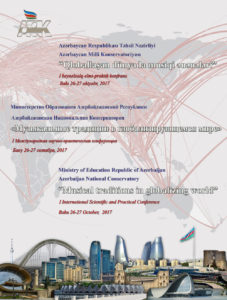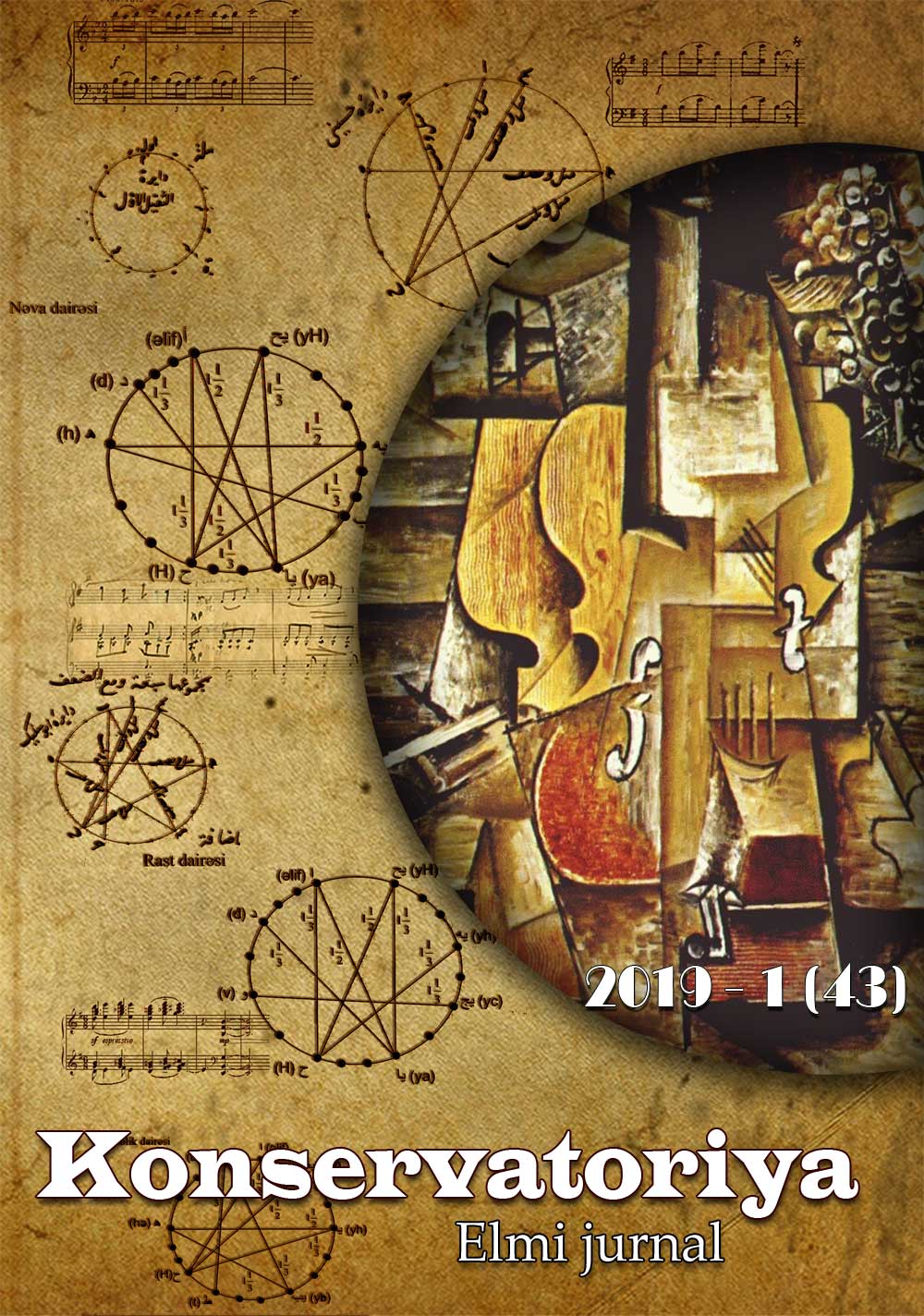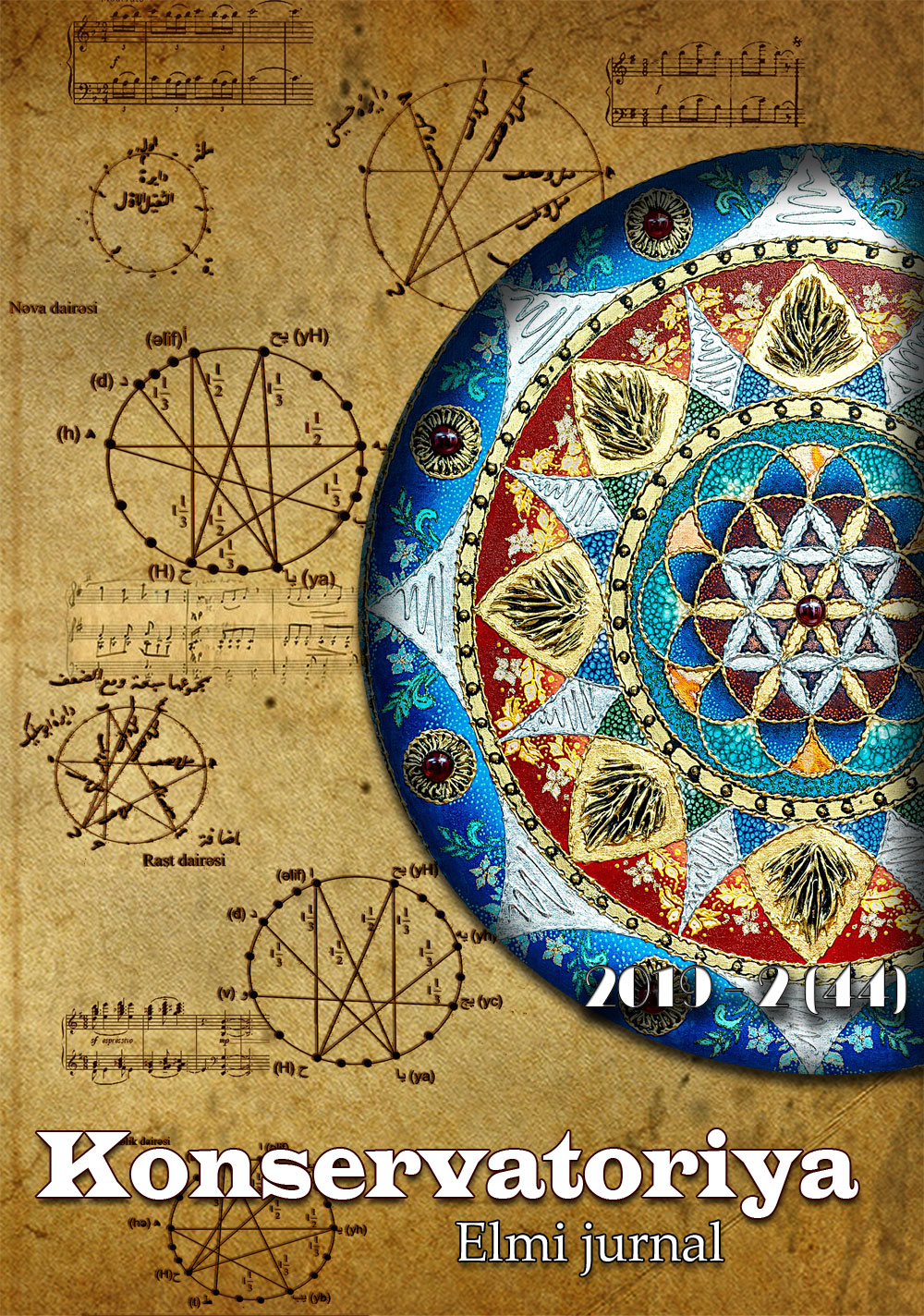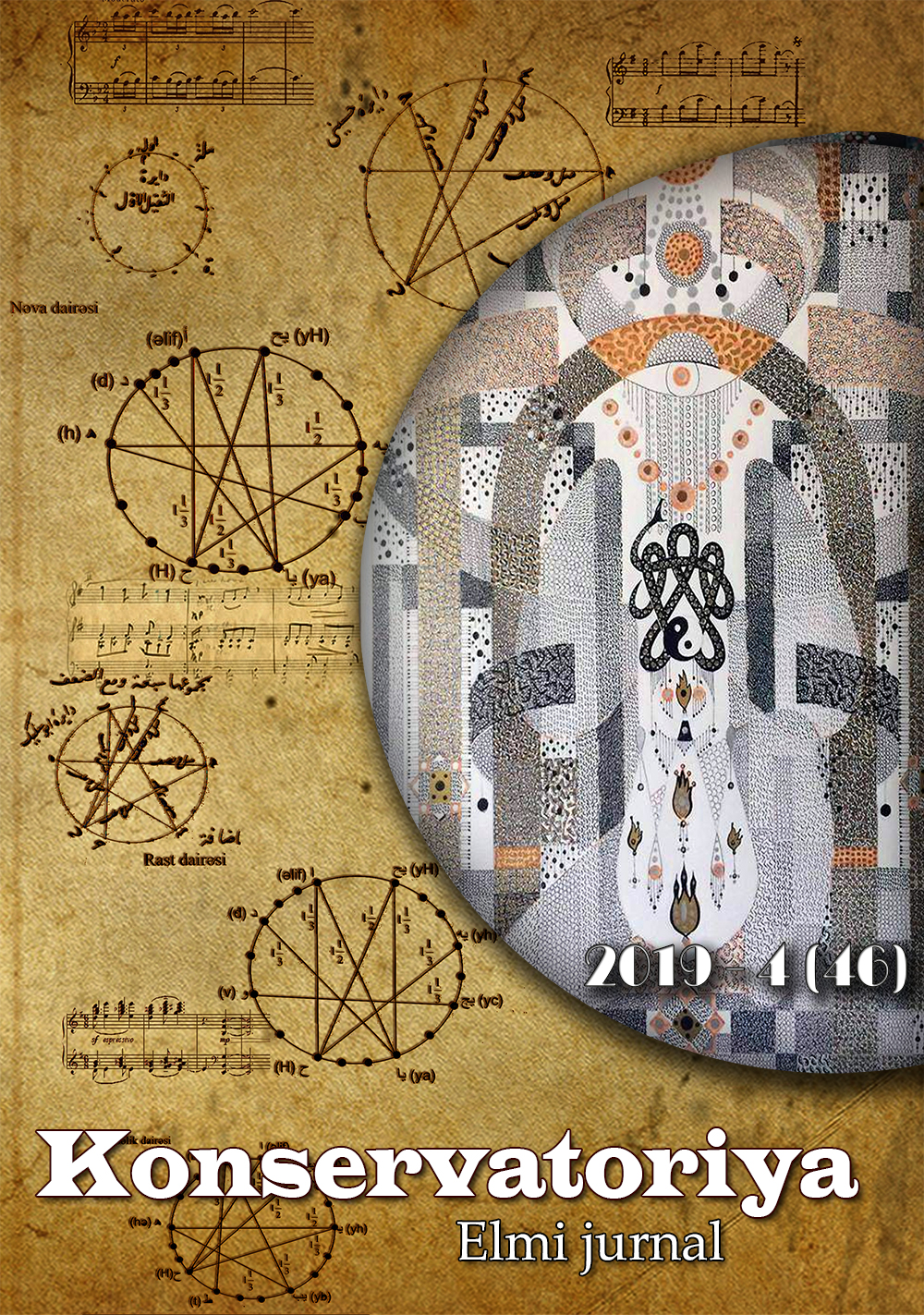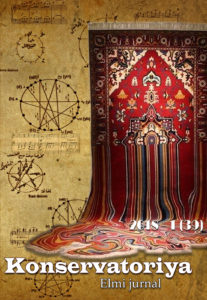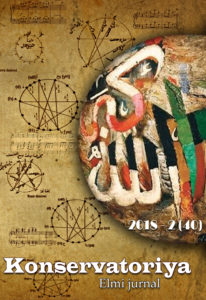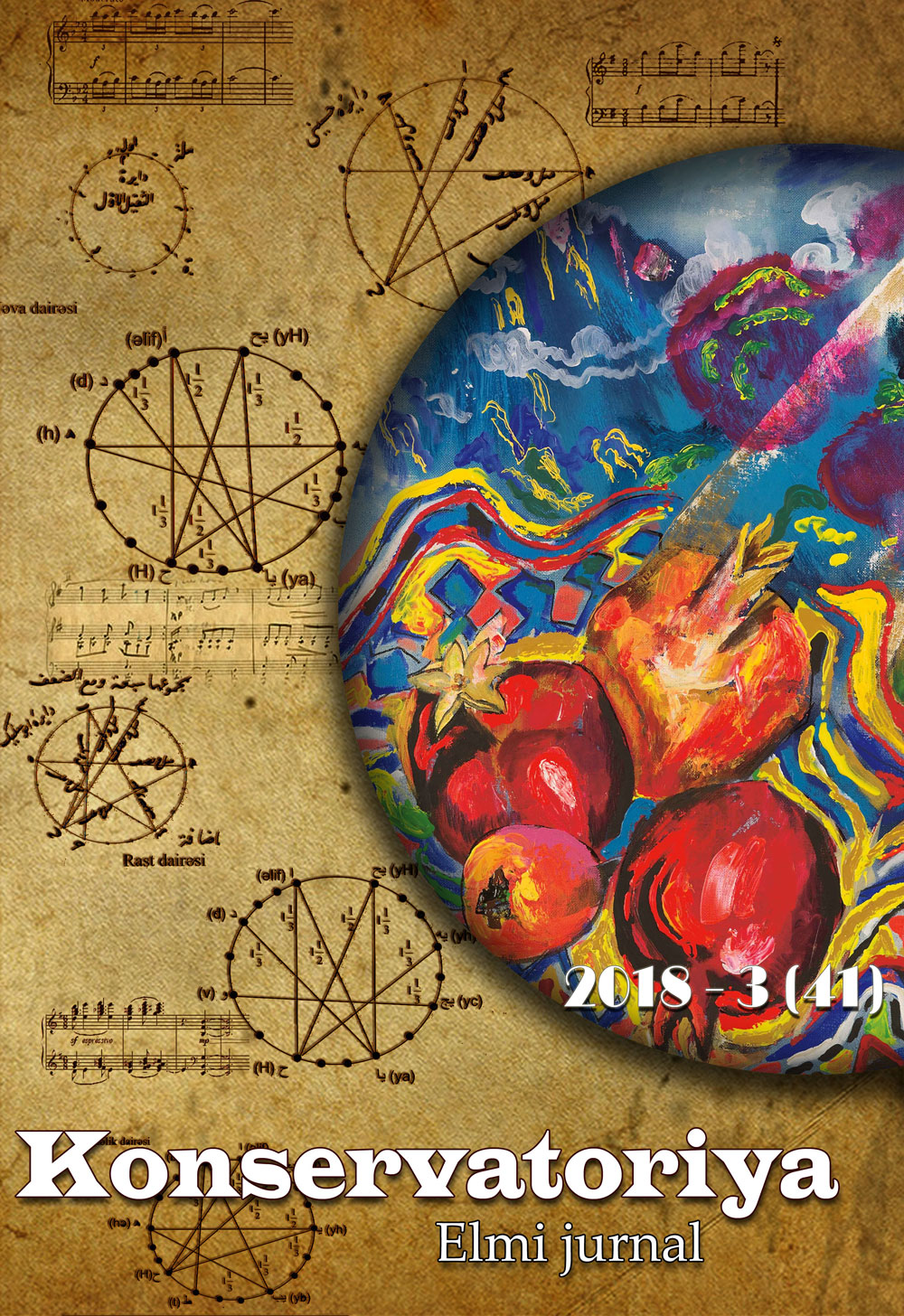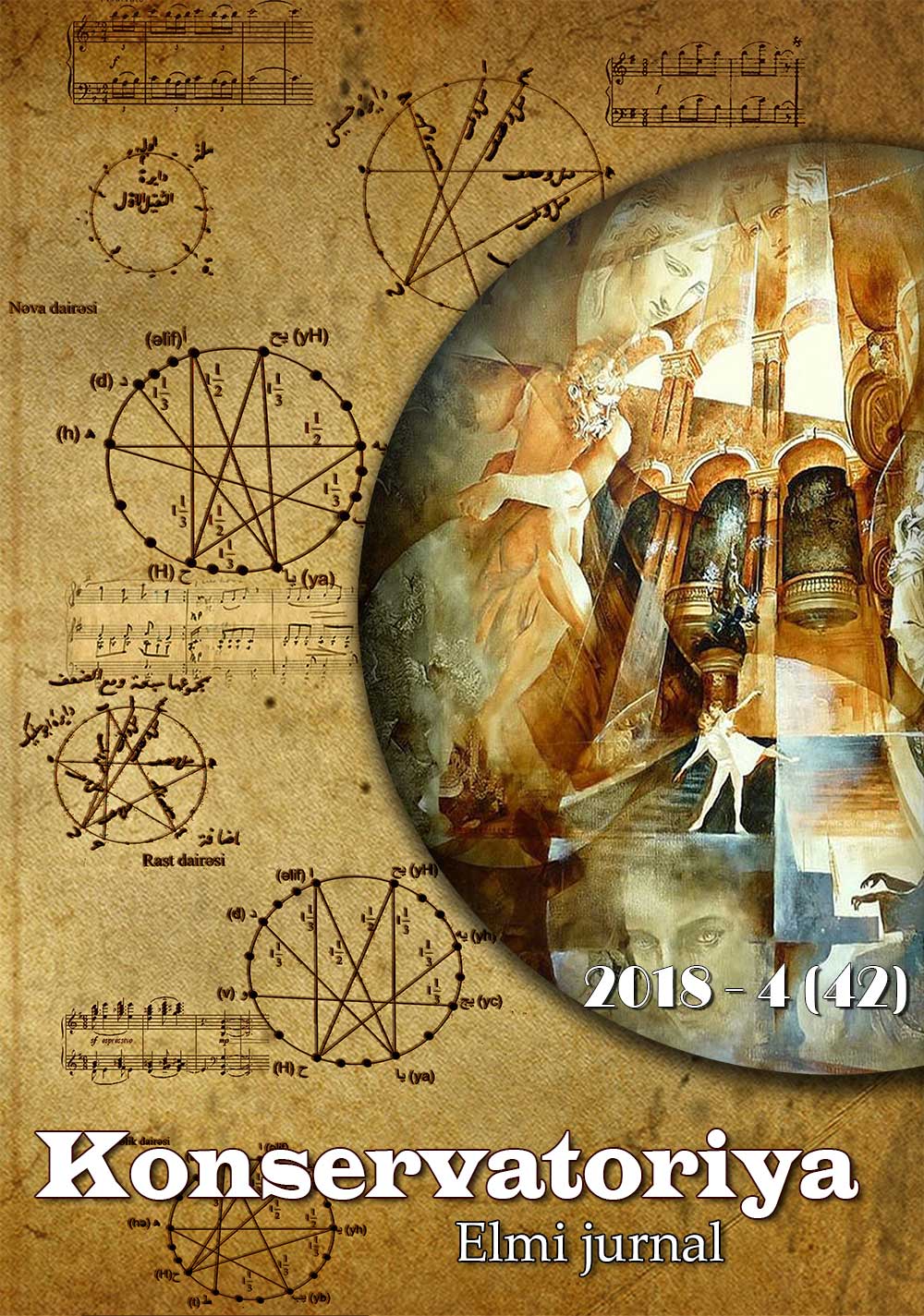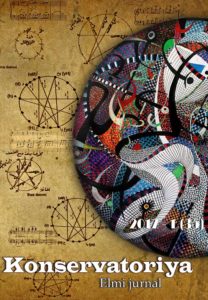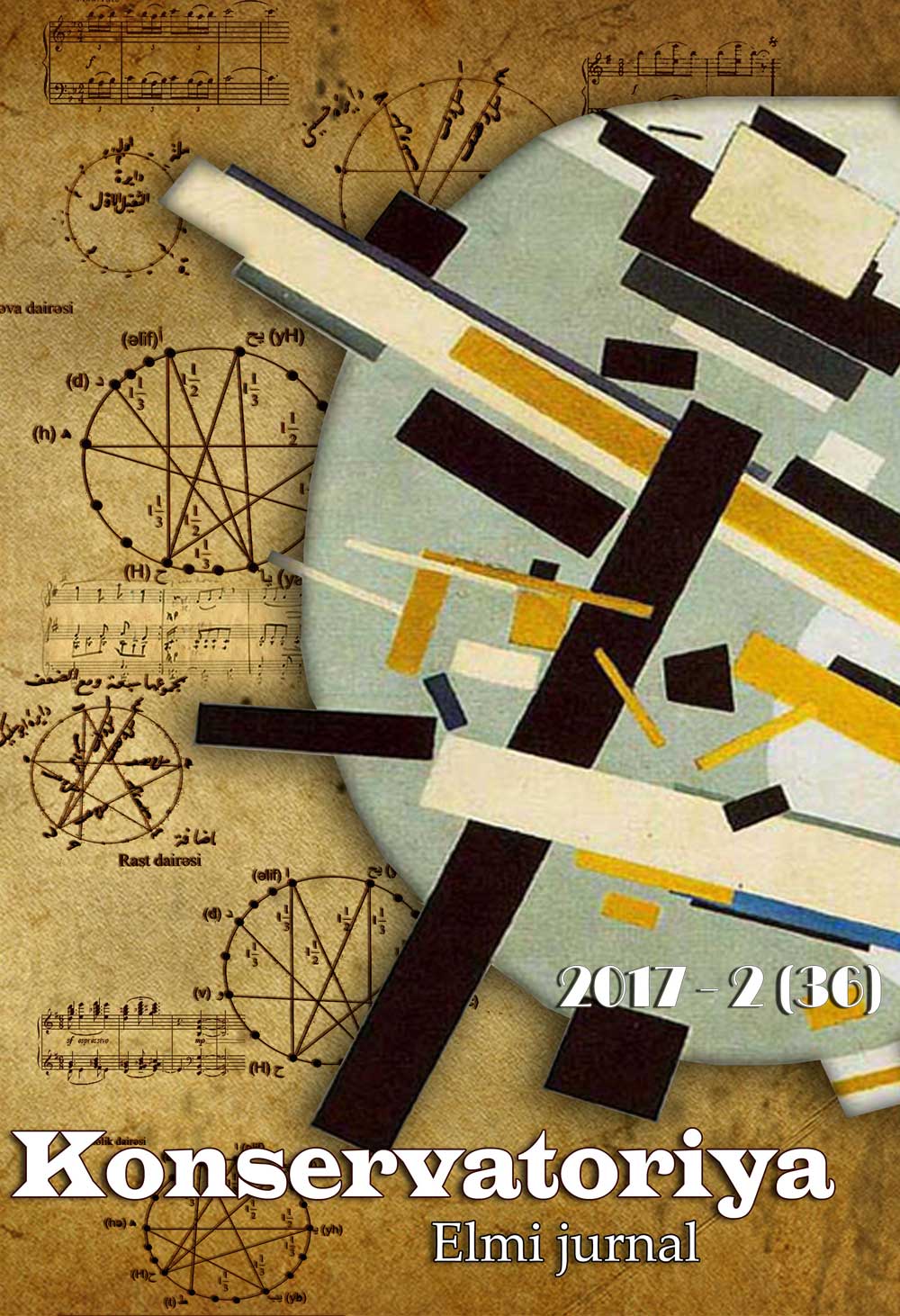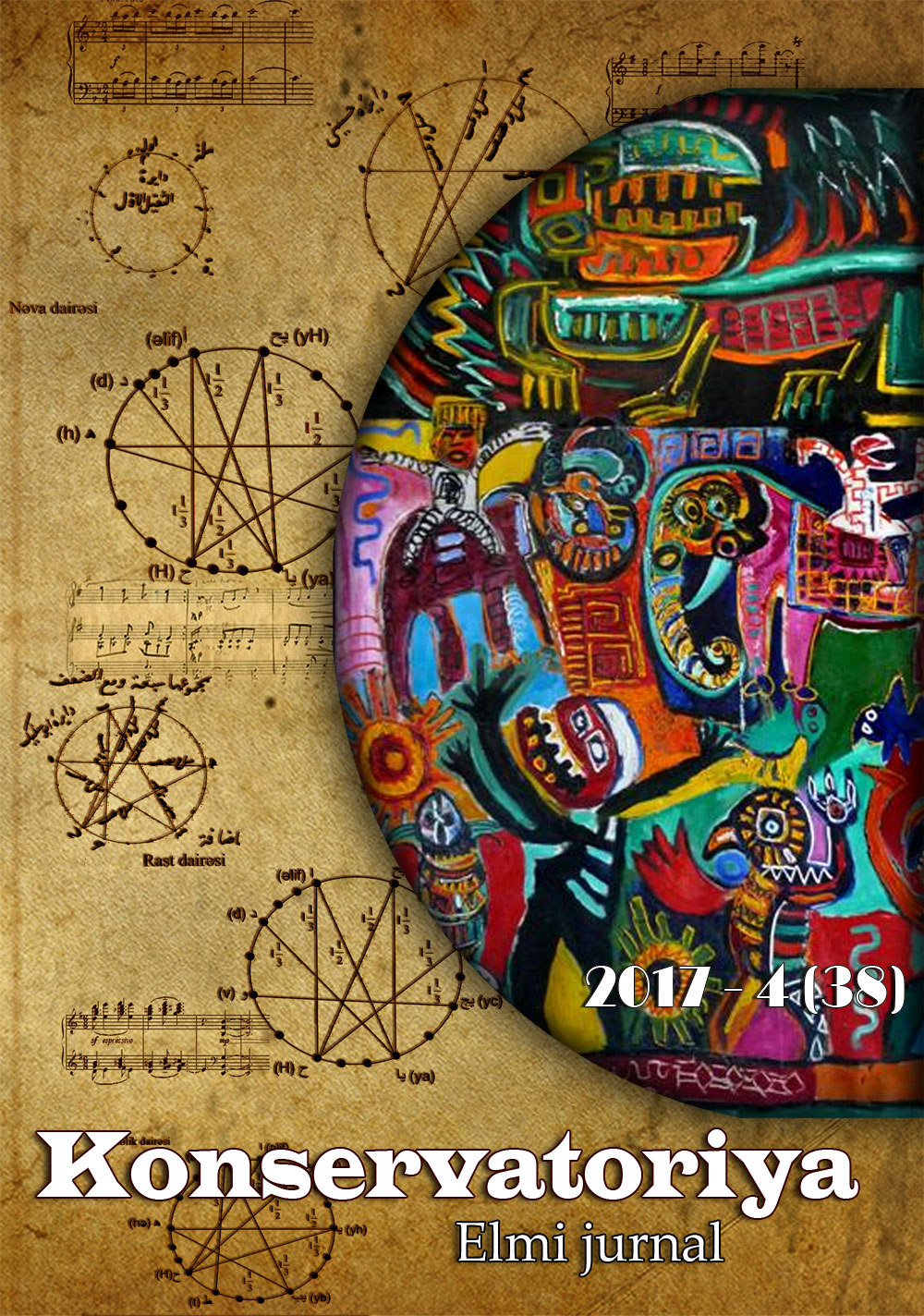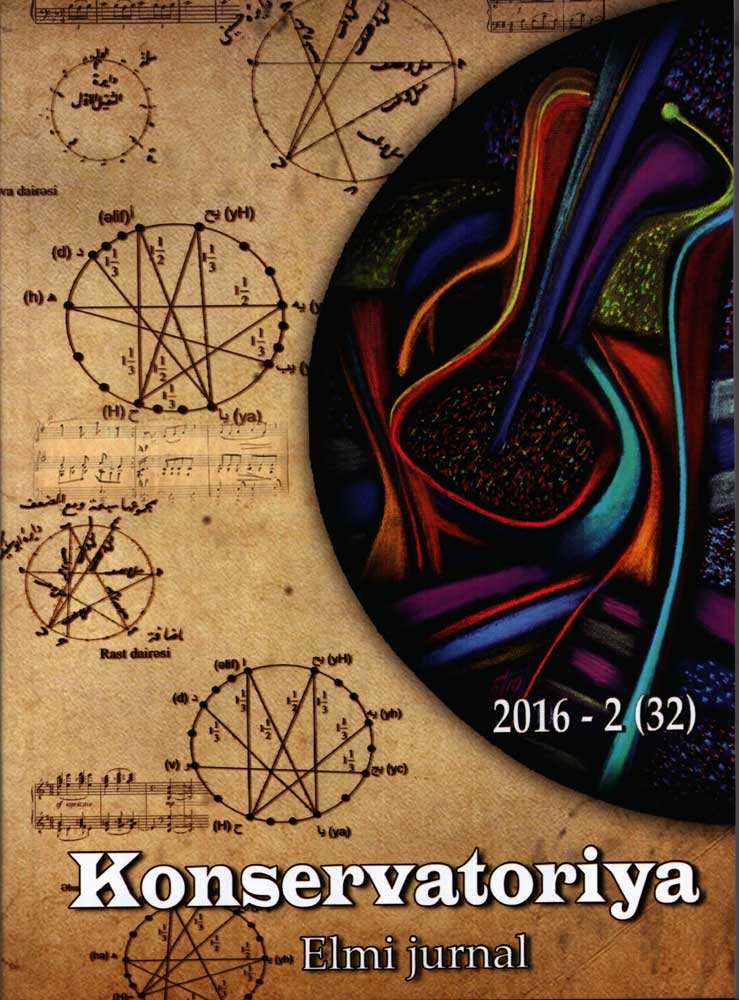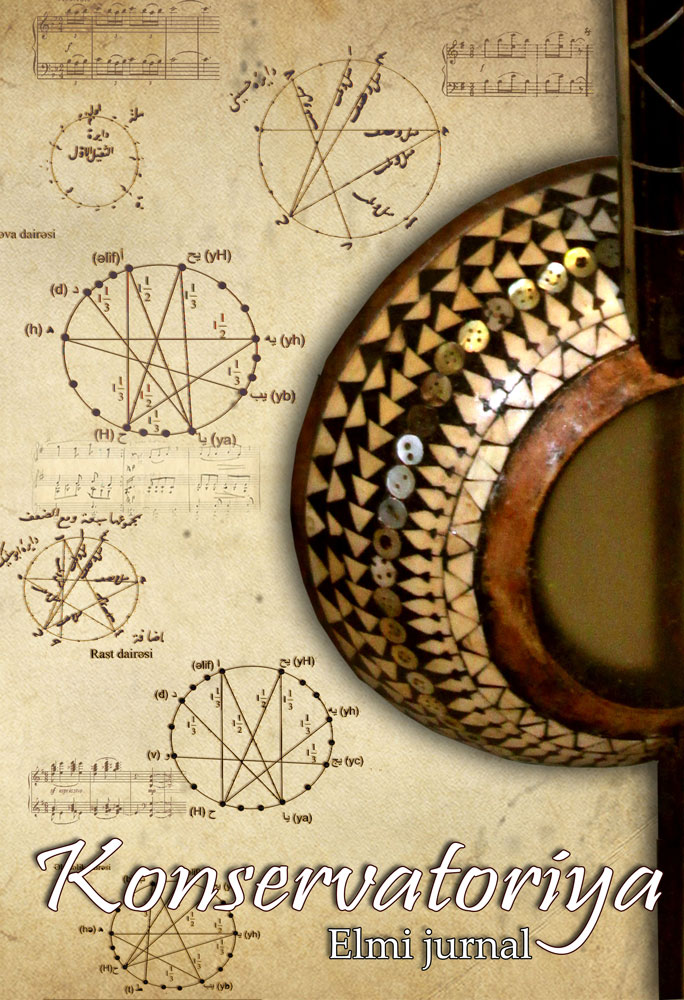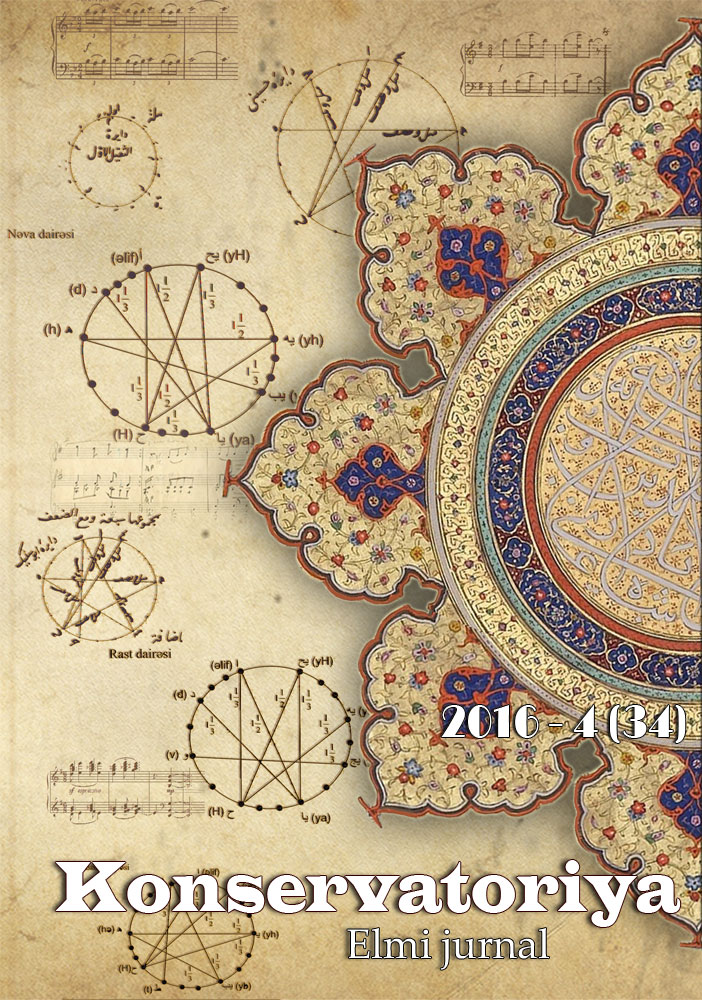6th International scientific symposium “Space of mugam”, Baku, June 20-22, 2023
AZƏRBAYCAN MİLLİ KONSERVATORİYASI
“KONSERVATORİYA” 2023 № 3 (60)
6TH INTERNATIONAL SCIENTIFIC SYMPOSIUM
“SPACE OF MUGAM”
Baku, June 20-22, 2023
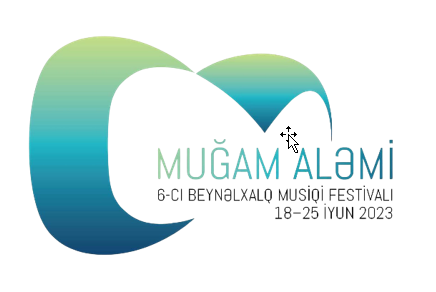
The 6th International Scientific Symposium ‘Space of Mugham’, was held at the National Conservatory, Baku, from June 20th to 22nd, 2023, in conjunction with an international festival and a competition for performers of mugham and other maqam related genres. The Space of Mugham is supported by Mehriban Aliyeva, President of the Heydar Aliyev Foundation, First Vice-President of the Republic of Azerbaijan, and Goodwill Ambassador of ISESCO.
Held in hybrid format and in Azerbaijani, Russian, and English languages with simultaneous translations, this symposium was a gathering of local and foreign researchers who shared knowledge about mugham and maqam-based music across the Islamic world. It was a fascinating three days of comparative exchange regarding the historical development, musical characteristics, teaching, research methods, composition, and archiving of ‘Azerbaijani mugham, Iranian dastgah, Uzbek and Tajik makom, Pakistani qawwali, Indian raga, as well as Turkish, Arab, Jewish, and Uyghur maqam music’ (Proceedings of the 6th International Scientific Symposium Space of Mugham). While the various traditions share similarities in the modal structures, they are distinct systems with different approaches to melodic and rhythmic development, improvisation, composition, and performance practices. They appear in diverse contexts such as court traditions, Sufi ritual practices, and Quranic recitation, and have gone through transformations due to colonialism and nationalism.

The presentations gave valuable insights into the concerns of academics and practitioners regarding research methodologies and analysis, new creativities, and transmission of knowledge about maqam-based music in the various countries. In her plenary paper “On the Concept of Mugham in Azerbaijani Music”, Sanubar BAGHIROVA (Azerbaijan) provided a holistic vision of the mugham by considering in totality various aspects of the phenomenon of mugham. These aspects include its terminology, modal system, the process of historical formation of the dastgah, its evolution in the twentieth century, and other issues. In turn, Rachel HARRIS (UK) highlighted the recent shift in theoretical focus from the study of maqam as icons of the nation that was prevalent in the twentieth century towards research on musical circulation, spiritual contexts, and change across the Islamic world. She stressed that new research methodologies that cross geographical and cultural borders need to be formulated for this kind of research in her plenary paper “Maqam Geographies: New Approaches to the Study and Practice of Maqam”.
Investigating treatises and old manuscripts represented one of the ways to unearth information about the origins, historical development, and circulation of the maqam genres that might be neglected in the bounded narratives of the nation state. Suraya AGAYEVA (Azerbaijan)’s pointed out that the study of medieval manuscripts written in cuneiforms helped her to revise the existing chronology of the formation of the mugham genre of Azerbaijani Turks and to learn about the early names and evolution of the mugham. Nilufar BOTIROVA (Uzbekistan)’s study on the history, theory, and practice of the Sufiyana Kalam or Kashmir Maqom in India and Pakistan, was based on the treatise ‘Taranai Surur’ Daya Ram Karu Khushdil that was created in Kashmir in the 18th century. Mohsen MOHAMMADI (USA/Iran) traced the emergence of the dastgah as a concept to the seventh century manuscript of musician Barbad that referred to seven modes. In the thirteenth century, Safi-od-Din Ormavi and Mohammad Nishāburi wrote manuscripts about music systems derived from twelve modes and six modes. Ormavi’s theory became the main source used in North Africa and Central Asia in the fourteenth century.
The historical evolution of the shared Central Asian Shasmaqom was also an important topic of the symposium. Faroghat AZIZI (Tajikistan) studied the history of the Shasmaqom in Tajikistan from the treatise Bayozi Shashmaqom that was written by the Tajik scholar-makomist Ustod Fazliddin Shakhobov. This treatise on Shashmaqom was the only treatise created during the Soviet era that was written by a member of the Tajik (Bukhara) classical school of maqom. Alexandr DJUMAEV (Uzbekistan) discovered another written source from the late Middle Ages that is kept at the Institute of Oriental Manuscripts of the Russian Academy of Sciences (in Saint-Petersburg). The collection of poetic texts found in the Treatise on Maqamat (Risala-yi Maqamat) provided a history to the formation of the Bukharian Shashmaqom.

Historical studies also revealed the connections between poetry and maqam. Asliddin NIZAMOV (Tajikistan) explored the relationship of the ghazal and soqiname poetic genres on the formation of the Tajik classical music Shashmaqom cycle. Nissim LUGASI (Israel), the director of the Maqamat School of Eastern Music in Israel, demonstrated how the Hebrew language is essential in Jewish Maqam music known as piyyut (sacred poetry) that is chanted in synagogues. He sang some piyyut to show that they have their own unique melodies, maqams, and rhythms. Other presenters illustrated the relationship between the maqam and poetry in religious contexts. Dilarom KAROMAT (Uzbekistan) examined the use of raga and maqam in qawwali that was originally performed at Sufi shrines in North India while Fakhraddin BAKHSHALIYEV (Azerbaijan) examined the poetry and music in the Sufi rituals in the modern period.
Regarding musical circulation, Will SUMITS (Turkey) looked at the transnational movement and commercialization of maqam music and the processes of musical change that came with music publishing and gramophone recording in the late Ottoman Empire (1875-1928). Using historical sources and iconography of the instruments, Genichi TSUGE (Japan) traced the circulation and connections of the long-necked plucked lutes with skin sound tables such as the tar, shidurghu, and qupuz in South Caucasus and Central Asia that were used to play maqam music.
In tandem with the festival and competition that featured both classical and newly created modern mugham music, there were stimulating and informative presentations about the characteristics of classical mugham in Azerbaijan and new approaches for the study of mugham. These presentations were exemplified by the daily performances of classical mugham at the symposium by well-known performance groups from Baku. Rauf BAHMANLI and Saadat VERDIYEVA (Azerbaijan) showed that the ‘sound’ of Azerbaijani folk dances and songs can be found in the structure of mugham dastgahs, particularly in the parts such as reng and tesnif, that are based on clear metro-rhythms. Two interesting papers on new approaches to the analysis of mugham included the singing voice and the dancing body. Alexandria Sultan von BRUSSELDORF (USA/Azerbaijan) discussed the use of medical technologies and acoustic analysis to investigate the larynx position, timbre, vibrato, and techniques used by Azerbaijani mugham singers. Sashar ZARIF (Canada) explained how he danced the mugham and created movements from memories, music, and mystical poetry that were inspired by Sufi and shamanic rituals.
At the same time, navigating the complexities of tradition versus modernity in the newly formed national art forms that are sponsored by the state, formed another pressing topic of discussion. During the festival, the participants were able to experience some of these national performances that were performed by famous mugham specialists and virtuoso performers trained in the conservatories in several big concert halls. Sevil FARHADOVA (Azerbaijan) elucidated the efforts of the famous khanende (vocal mugham performer), Ustad Alim Gasimov who has brought the mugham performing tradition to great heights and at the same time kept the spiritual elements in the music. With live renditions from a local teacher/performer Shirzad FATHALIYEV and Leyla GULIYEVA (Azerbaijan) explained how the folk instrument balaban, that has been added to the Azerbaijani classical mugham ensemble (that originally consists of a tar, a kamancha and a khanende), has influenced the teaching and performances of mugham. Lala Huseinova and Malik MANSUROV (Azerbaijan) in their joint presentation, deliberated the changes in modern mugham compositions and issues of interpretation of the traditional mugham cycle or dastgah and the teaching of uniform redifs in educational programs. It would have been illuminating if the performing artists themselves could share their experiences at a roundtable about performing classical maqam-based music and new creations.
As Michael CHURCH emphasized in his plenary paper, many of the maqam-based musical genres are ‘under threat because of war, politics and disease.’ Novel methods of transmission and systems of teaching are needed to revitalize mugham and related traditional genres of modal music in different parts of the world. Some of the papers that pointed to the methods, problems, and solutions in pedagogy include the teaching of: (i) rhythm in the classical Shashmaqom (Abduvali ABDURASHIDOV, Tajikistan), (ii) falak or maqom of the Tajik Mountain (Faroghat AZIZI and Sadullo KARIMOV, Tajikistan); (iii) gaval musical performance (Ayten MAHARRAMOVA, Azerbaijan): (iv) Indian classical Carnatic Music (Ilkhas MAMMADOV, Azerbaijan and Bhavana PRADYUMNA, India-France); and (v) concept of maqam in the traditional Turkish Music (Yakup Selim SHENER, Turkey).
In the final analysis, the collection and archiving of written documents and sound recordings of traditional modal (maqam-based) music are critical for safeguarding and for the reference of future generations as the music is changing so quickly. Information about the collections in various places were highly appreciated. Abdullah AKAT (Turkey) introduced the collections in DÂRÜLELHAN (House of Melodies) that is housed in Istanbul University today. Founded in 1916, this was the first official music school of the Ministry of National Education in the Ottoman period. The collection contains compositions and folk songs of Turkish makam-based music. Record Collectors, Gulhuseyn KAZIMLI and Turan IBRAHIMOV (Azerbaijan), enlightened the audience about their search for old recordings of Azerbaijanian music and their database of more than six hundred gramophone records. Between 1906-1912, Azerbaijani singers were recorded by gramophone companies such as the Gramophone Co., PATE, Ekstrafon, and Sport-Record.
Irada KOCHARLI (Azerbaijan) dealt with the issues of preservation and digitization of the national musical heritage and sheet music manuscripts that are presently stored in the archives of ANAS Institute of Architecture and Art. Of particular interest were the sheet music manuscripts of symphonic mughams and other mugham pieces by the renowned Azerbaijani composer Fikrat Amirov obtained from the Archive. Zulfiya MURADOVA (Uzbekistan) shed light on the collection and digitization of recordings of the makom-based music at the Audio archive of the Fine Arts Institute of the Academy of Sciences of the Republic of Uzbekistan. Information about the collectors and the heritage masters of makom are also kept in the archives. Fatima NURLYBAYEVA (Kazakhstan) gave an overview of the archival materials of mugham and other maqam-based music that were collected by French researchers in Central Asia and the Middle East from 1900 to 1963 and stored in the Audiovisual Department of the National Library of France.
It was a privilege and honour to be invited to attend and write about this inspiring symposium. Congratulations to the organizers, Prof. Sanubar Baghirova, and Prof. Lala Huseinova, and their team for a thought-provoking and enjoyable event. Heartfelt thanks to the classical and modern mugham artists for their exhilarating performances during the symposium. All good wishes for the next symposium and festival!
Prof. Dr. TAN Sooi Beng
ICTMD Vice-President,
School of the Arts,
University of Science Malaysia.


